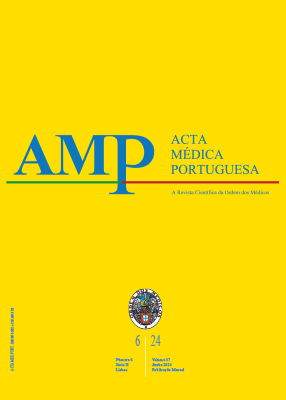Spindle Cell Lipoma of the Hallux: A Rare Entity
DOI:
https://doi.org/10.20344/amp.20935Keywords:
Hallux, LipomaAbstract
N/a.
Downloads
References
Seo BF, Kang IS, Oh DY. Spindle cell lipoma: a rare, misunderstood entity. Arch Craniofac Surg. 2014;15:102-4. DOI: https://doi.org/10.7181/acfs.2014.15.2.102
Ben Salah N, Lahouel I, Manaa L, Youssef M, Belhadjali H, Zili J. Spindle cell lipoma: an uncommon variant of lipoma affecting the foot sole. Clin Case Rep. 2022;10:e05455. DOI: https://doi.org/10.1002/ccr3.5455
Austin CD, Tiessen JR, Gopalan A, Williams JM Jr, Bangs CD, Cherry AM, et al. Spindle cell lipoma of the foot and the application of CD34 immunohistochemistry to atypical lipomatous tumors in unusual locations. Appl Immunohistochem Mol Morphol. 2000;8:222-7. DOI: https://doi.org/10.1097/00129039-200009000-00009
AlRashed R, Albdah A, Alsannaa F. A case report of spindle cell lipoma. Ann Med Surg. 2022;79:103960. DOI: https://doi.org/10.1016/j.amsu.2022.103960
Angervall L, Dahl I, Kindblom LG, Säve-Söderbergh. Spindle cell lipoma. Acta Pathol Microbiol Scand. 1976;84:477-87. DOI: https://doi.org/10.1111/j.1699-0463.1976.tb00145.x
Math KR, Pavlov H, DiCarlo E, Bohne WH. Spindle cell lipoma of the foot: a case report and literature review. Foot Ankle Int. 1995;16:220-6. DOI: https://doi.org/10.1177/107110079501600411
Chen S, Huang H, He S, Wang W, Zhao R, Li L, et al. Spindle cell lipoma: clinicopathologic characterization of 40 cases. Int J Clin Exp Pathol. 2019;12:2613-21.
Downloads
Published
How to Cite
Issue
Section
License
Copyright (c) 2024 Acta Médica Portuguesa

This work is licensed under a Creative Commons Attribution-NonCommercial 4.0 International License.
All the articles published in the AMP are open access and comply with the requirements of funding agencies or academic institutions. The AMP is governed by the terms of the Creative Commons ‘Attribution – Non-Commercial Use - (CC-BY-NC)’ license, regarding the use by third parties.
It is the author’s responsibility to obtain approval for the reproduction of figures, tables, etc. from other publications.
Upon acceptance of an article for publication, the authors will be asked to complete the ICMJE “Copyright Liability and Copyright Sharing Statement “(http://www.actamedicaportuguesa.com/info/AMP-NormasPublicacao.pdf) and the “Declaration of Potential Conflicts of Interest” (http:// www.icmje.org/conflicts-of-interest). An e-mail will be sent to the corresponding author to acknowledge receipt of the manuscript.
After publication, the authors are authorised to make their articles available in repositories of their institutions of origin, as long as they always mention where they were published and according to the Creative Commons license.









